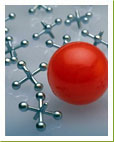|
Deeds Created in 20 Minutes 24/7
EMAILED INSTANTLY |

SMSF Strategies for 2009 : SEMINAR
Response to our last newsletter was overwhelming - we had many requests from our Queensland clients to conduct a seminar in Brisbane - Do not miss to learn New SMSF Strategies.....book now
9th December 2008 Tuesday 6 PM
Robertson Gardens - 281 Kessels Road - Robertson QLD 4109
Cost $55
|
Since the 9 May 2006 Federal budget, superannuation has become the most tax effective vehicle for wealth accumulation, asset protection & estate planning. Superannuation is becoming the first or second largest asset for most individuals.
This ATMA professional development group presents a great opportunity for advisors to learn how interesting strategies can be structured so that they can assist their clients to maximize their retirement benefits.
Advert: Company Formations $455 Instant Email
Strategies covered
- How to get more money into super
- Why paying off principal of your own home loan could be the worst decision you would ever make
- How a 50 year old can pay only 4% interest on own home loan
- Instalment warrants Vs joint venture Unit trust arrangement
- Preservation and conditions of release requirements
- Re-contribution strategies - are they still alive
- Splitting super with spouse
- Transition to retirement pensions
- How 75 + year olds can contribute into super
- Other interesting and complex strategies

Manoj Abichandani
Technical Director www.trustdeed.com.au
SMSF Specialist Advisor
 
Manoj has worked in the SMSF industry forthe past 19 years and currently audits more than 250 funds. He develops SMSF strategies and advises accountants on complex SMSF matters.
Cost of seminar is $55 and for ATMA members $44, to book click here

|
Pensions from Self Managed Super Funds

When you become
entitled to be paid a lump sum benefit from your sup er fund, usually at the time of retirement (after you
attain preservation age or satisfied any other condition of release) or
permanent incapacity, the trustees of your super fund may allow you to choose
to receive a pension instead of a lump sum from your super account. This
regular payment is called a pension. er fund, usually at the time of retirement (after you
attain preservation age or satisfied any other condition of release) or
permanent incapacity, the trustees of your super fund may allow you to choose
to receive a pension instead of a lump sum from your super account. This
regular payment is called a pension.
If you are
allowed to receive an account based
pension (ABP) under your self managed super fund trust deed, your trustees
can pay you an account based pension, your trust deed can be updated to include
ABP. Click here to learn how to
update your trust deed. From 20th September 2007 only account based
pensions can be commenced from your SMSF.
When can you access your super?
You can access
your super when you reach preservation age and retire or when you turn 65, even
if you haven't retired. You may also be eligible to access some of your super
under the transition to retirement rules.
Your preservation
age depends on your date of birth. The following table lists preservation age
from 1960 to 1964:
Date of birth Preservation
age
Before 1 July
1960 55
1 July 1960
30 June 1961 56
1 July 1961
30 June 1962 57
1 July 1962
30 June 1963 58
1 July 1963
30 June 1964 59
From 1 July
1964 60
Your
preservation age is not the same as your pension age, which is when you may
become eligible for government pension benefits depending on your income or
assets.
Accessing your super before you retire
You can access
your super before you retire in limited circumstances, including under the
transition to retirement rules, or if you are in severe financial hardship, on
compassionate grounds or under the terminal illness rules (our trust deed
includes this new release condition). Applications for release of benefits on
compassionate grounds must be referred to the Australian Prudential Regulation
Authority (APRA).The trustees of your self managed super fund will make the
final decision about releasing your benefits.
How Much Super can
you withdraw?
The pensioner is able to select annually the level
of the pension withdrawal amount between the minimum amounts and there is no
maximum amount for AB Pensions under the SIS Act and the SIS Regulations.
However, in case of transition to retirement pensions, the maximum a member can
withdraw is 10% of the pension balance on 30th June of the preceding
year or in the first year, 10% of the pension balance at the commencement of
the pension. to select annually the level
of the pension withdrawal amount between the minimum amounts and there is no
maximum amount for AB Pensions under the SIS Act and the SIS Regulations.
However, in case of transition to retirement pensions, the maximum a member can
withdraw is 10% of the pension balance on 30th June of the preceding
year or in the first year, 10% of the pension balance at the commencement of
the pension.
ABP allows for full access to capital, the member
is able to draw down funds at any time by the commutation of all or part of
their pension account balance in the fund.
Account Based Pension
Payment Conditions
Account Based Pension is a
flexible and regular income stream paid out to a member by a Superannuation
fund from the member's pension account balance.
Investment earnings, such
as rent, interest, dividends etc are added to the account and expenses are
deducted from the account. Trustee cannot charge a fee for providing you a
pension, however subject to your trust deed may be entitled to out of pocket
expense. The member's account may go up initially but may reduce over time, when
member gets older and if the minimum withdrawal percentage is more than investment
rate of return.
The rate of reduction will
be depend on:
- The net investment earnings
- The amount of pension paid
- The member's age, and,
-
Any commutations of pensions to lump sum benefits.
Unlike lifetime income
streams (pensions or annuities) there is no guarantee that the pension will be
paid for full life of the member. The member retains the benefit of higher
earnings and/or capital growth but also carries the risk of lower earnings
and or capital losses and how long the underlying capital in their account
balance in their Superannuation fund will last.
Most people consider the
ability to access capital, investment control of the fund and transfer any
remaining balance to their dependants or estate on death more than compensates
for the risk that they may run out of capital before death.

Definitions

allocated pension means a pension that is provided under
rules of a superannuation fund that meet the standards of sub regulation
1.06 (4) of SIS Regulations.
account based
pension means a pension that is provided in accordance with the
rules of a fund that:
(a) are described in paragraph 1.06 (9A) (a);
and
(b) meet the standards of sub regulation 1.06 (9A)
of SIS
Regulations
Allocated pension commenced in a
SMSF prior to 20th September 2007 can be continued to be paid from a
SMSF and for payments made on or after 1 July 2006 the respective
maximum and minimum limits for the year is to be calculated in accordance with
Schedule 1AAB of SIS Regulations.
Crystallization of
Superannuation Benefit
From 1st July
2007 when any trigger event happens (like member turning 60 years etc) the
trustees must crystallize any pension interest of a member in a SMSF; any Pre
1983 component is added to un deducted component and together become Tax Free
components (along with some other rare components). These rules are known as proportioning
rule.
Proportioning
rule
When a super benefit is paid from a
superannuation interest, the benefit is paid in the proportions of tax-free and
taxable components, which make up the value of the superannuation interest just
before the benefit is paid (purchase price of pension). For example, if the
member's superannuation interest is made up of a 30% taxable component and a
70% tax free component, the super benefit paid (pension paid to the member) must
be made up of a 30% taxable component and a 70% tax free component.
Any income growth (such as interest, rental,
dividend income etc)  in superannuation interest is also allocated in the same proportions
of tax free and taxable components, which make up the value of the
superannuation interest before any benefit is paid percentage is fixed at the
time of commencement of pension. For example, if the fund increases (or
decreases) in value by say $100,000 and if 70% is tax free component, the super
interest will increase (or decrease) by $70,000 as tax free component at the
end of the year. in superannuation interest is also allocated in the same proportions
of tax free and taxable components, which make up the value of the
superannuation interest before any benefit is paid percentage is fixed at the
time of commencement of pension. For example, if the fund increases (or
decreases) in value by say $100,000 and if 70% is tax free component, the super
interest will increase (or decrease) by $70,000 as tax free component at the
end of the year.
These proportioning rules should not be
confused with the tax situation of the pensioner i.e. any superannuation
interest paid to a pensioner over the age of 60 years old, is tax free and is
NOT to be included in their income tax returns. But if the pensioner is under
60 years old, taxable component is included in the pensioner's income tax
return and trustees must issue a PAYG Payment summary and withhold appropriate
withholding tax.

New Contributions into your
SMSF whilst being on TRIP

So long as you
are under 65 or aged 65 to 74 and meet the work test of 40 hours work in 30
consecutive days, you are eligible to make super contributions into your
superannuation fund account into a new accumulation account whilst withdrawing
an account based pension as a transition to retirement pension from your
pension account. You may also be eligible for co contribution depending on
your income and if you contribute after tax money in your super etc.
For example,
even if you are on transition to retirement income stream (pension), your
employer still has to make super guarantee contributions into your fund if you
are still eligible up to the age of 70, this contribution can be accepted by
your self managed super fund in your accumulation account, you may also salary
sacrifice into your SMSF.

What
happens at the time of death of Pensioner?
In case of death of the pensioner, the trustee may
pay the benefit consistently with the death benefit nomination of the deceased
pensioner at the discretion of the trustee; this death benefit nomination can
be binding on the trustee if the pensioner executed a valid binding death
benefit nomination form.
Or when the
pensioner dies, the trustee will continue to pay the pension to the
reversionary beneficiary if a reversionary beneficiary is nominated by the
pensioner, provided the reversionary beneficiary is a dependant of the
pensioner before the pensioner's death. Paying
a pension to the reversionary beneficiary will override any payments under Binding
Death Nomination which you may have already instructed to your trustee
depending on your pension agreement.

If the reversionary beneficiary has
died before the pensioner's death or is not entitled to receive a reversionary
pension under the SIS Act (non tax dependant), the trustee will then pay the
balance of your account based pension account to the beneficiaries you may have
nominated in a valid Binding death benefit nomination notice or if there is no
binding death nomination notice then the balance of the account will be paid by
the trustee consistently with the trust deed and or to your legal personal
representative.
If the pension
is being paid to a reversionary beneficiary and if that person dies, then the
trustee must pay the account balance to the person nominated in the
death benefit notice of the reversionary beneficiary.
The account based pension will end, when the money
in the pension account finishes or when the pensioner dies or when the reversionary
beneficiary dies.
A lump sum death benefit payment is tax free if paid to a
person who is a "tax dependant". If a lump sum death benefit is paid to a
"non tax dependant" from a "taxable" component, the taxable component of the
benefit will be taxed at a maximum tax rate of 15%, plus the Medicare levy. Any
"tax free" component is paid to a non tax dependant tax free.

Who is a tax dependant?
A tax dependant
is: - a spouse or defacto spouse
- a former spouse
or de facto spouse
- a child of the
deceased under 18 years of age
- any person who
relied on the deceased for financial maintenance at the time of their death, or
- any person who
lived with the deceased in a close personal relationship where one or both of
them provided financial and domestic support and personal care.
What
is the problem with Allocated Pensions?
If all the tax dependants (e.g. spouse) die
before the pensioner, the superannuation benefit is than has to be paid as a
lump sum to non tax dependants.
Since non tax dependant will be liable for
16.5% for any "taxable" component of this lump sum, it is imperative to convert
"taxable" component to "tax free" component in the pensioner's lifetime. To
convert from "taxable" component to "tax free" component the pensioner needs to
withdraw from super and contribute back in super "tax free.
However, under allocated pension there is a
maximum amount which the pensioner can withdraw, there is no maximum withdrawal
limit under account based pensions.

If the pensioner has "taxable" and "tax
free" components in a superannuation benefit, the pensioner can withdraw
(commute allocated pension or withdraw the whole lot under ABP) the entire
amount and recontribute back into the SMSF as a Tax Free amount. But the new
rules have put limits to how much you can deposit back (contribute) each year.
You can contribute only $150,000 of your
own money (old term un deducted) each year, SIS Act allows to bring forward this
maximum contribution limit for the next two years if you are under 65 years
old, which means that you can contribute $450,000 once in three years. But if
you are over 65 years old, bring forward rules do not apply and you have to be
gainfully employed for 40 hours in a 30 day period.
Strategy
1: Convert "taxable" component to "tax free" component

If you have less than $450,000 in your
super fund and you are less than 65 year old (or and your spouse) and have
taxable component in your super benefit or if you have less than $900,000 and
both you and your spouse and both are below 65 you both can merely withdraw
everything from your allocated pension by commuting the pension and re-contributing
and starting an account based pension in your self managed super fund.

Strategy
2: Convert a large amount of "taxable" component to "tax free" component
If you have more than $900,000 taxable
component between yourself and your spouse super benefits and are over 60 years
old but less than 65 year old and not working. You have a small window of
opportunity to convert your entire "taxable" component to "tax free" component.
This is an important strategy because if your
tax dependants die before you (or in a situation when the two pensioners die
together in a joint sudden death), your "taxable" component will be subject to
16.5% tax to your non tax dependants (adult children) when your death super
benefit lump sum is paid to your them.

This strategy is very simple to execute, the
two pensioners withdraw $450,000 each from fund A as a pension payment and
commence another self managed super fund say SMSF B and deposit this amount as
tax free component and commence an account based pension in fund B. Click here to learn how to set up a new SMSF. After
three years, whilst they are still under 65 years old, similar amount is
withdrawn and deposited in Fund B to commence pension number two, thereafter Fund
A is closed if it has a low balance or money withdrawn from Fund A and kept
outside super. Click here to learn
how to commence an account based pension in a SMSF.
Please note, there is no harm in keeping
money outside of super as you will not pay any tax on any income earned up to
$28,000 (for each pensioner) after the age of 65, due to low income rebate and
Senior Australian Tax Offset.
This strategy will not work if you have an
allocated pension in Fund A because there is a maximum withdrawal limit in an
allocated pension, which could be bel ow $450,000 and no maximum limit in
account based pension. It is easy to convert an Allocated pension to an Account
Based Pension (click here to learn more),
provided your trust deed allows this conversion. Your SMSF trust deed can be
updated to ensure that it allows conversion of current Allocated Pension to Account
Based Pension, click here to learn how to
update your trust deed. ow $450,000 and no maximum limit in
account based pension. It is easy to convert an Allocated pension to an Account
Based Pension (click here to learn more),
provided your trust deed allows this conversion. Your SMSF trust deed can be
updated to ensure that it allows conversion of current Allocated Pension to Account
Based Pension, click here to learn how to
update your trust deed.
Remember, if you die and leave say $500,000
taxable component for your adult children, they will pay $82,500 tax which can
be easily be reduced to NIL by implementing any of the above two strategies.


|
|
www.trustdeed.com.au provides online service for creating, storing & managing legal documents for Companies and Trust deeds for SMSF, Family, Unit & Hybrid Trusts, click here for more information.
 New / Update SMSF Trust Deeds cost only $110 and can be created in 20 minutes, Trust Deeds are emailed instantly! New / Update SMSF Trust Deeds cost only $110 and can be created in 20 minutes, Trust Deeds are emailed instantly!
|
|
FIRST TRUST DEED FREE |
if you are an advisor, financial planner, accountant or a solicitor, we can offer you to create one trust deed on our system for free. This offer is valid provided you purchase 10 or more new SMSF deeds or update 10 SMSF trust deeds for your clients. To claim your first free trust deed, first register on our website www.trustdeed.com.au and phone our office on 02 9638 2807 for a promotional code.
If want to communicate with your clients, advising them the need & advantages to update their trust deed, click here to download a pro-forma letter to your clients.
|
| remeber you can create a SMSF trust deed at any time 24 / 7 |
|
www.trustdeed.com.au goes on live help
If you are an advisor and use our website for your clients SMSF  Trust Deed. You now have access to SMSF Specialist Advisor who will answer all your technical questions online for you. Simply click the button above and start chat. Trust Deed. You now have access to SMSF Specialist Advisor who will answer all your technical questions online for you. Simply click the button above and start chat.
New or update your existing SMSF Trust Deed for $110 You can keep the trust deed up to date for the next five years for only $165.
Our SMSF trust deed has been prepared with input from accountants who have over two decades of experience in setting up structures for their clients and have combined knowledge of auditing and lodging tax returns for more then 2000 SMSF's, their practical experience is an invaluable contribution.
For further questions on our trust deed, ring 02 9684 4199 or email sales@trustdeed.com.au |
| |
Our Website has complete Document manager for all future downloads
We are the only online SMSF Trust Deed providers where you can purchase a Trust Deed 24/7 for $110
It takes only Less then 20 minutes to register and build a SMSF Deed.
|
|
| Phone 02 9684 4199 or visit www.trustdeed.com.au |
|
This email is sent by:
Sales Team
www.trustdeed.com.au
Deed Dot Com Dot Au Pty Ltd
P 02 9684 4199 F 02 9838 3060
Unit 4, 287 Victoria Road, Quantum Corporate Park NSW 2116
PO Box 1010 Dundas NSW 2117
| |
|
|